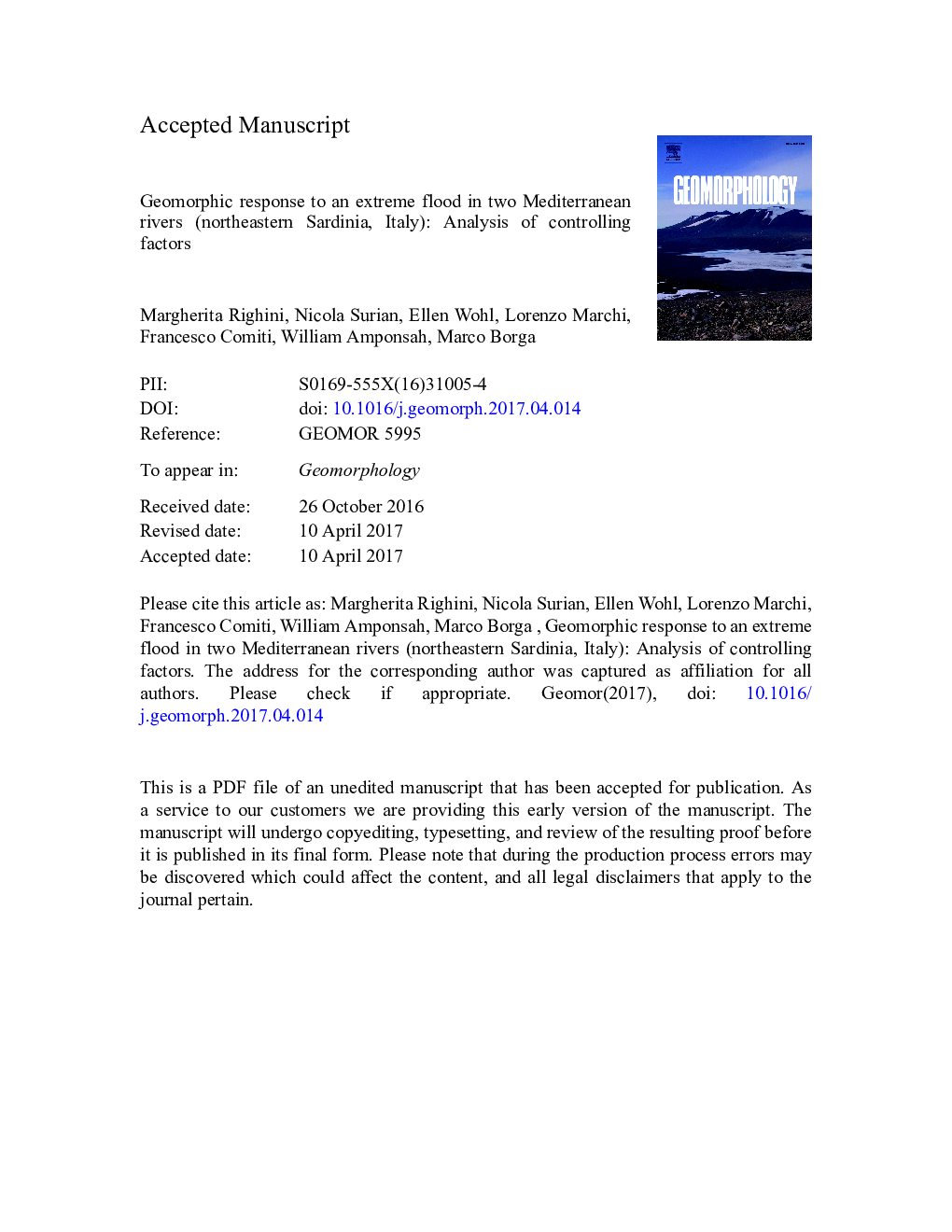| Article ID | Journal | Published Year | Pages | File Type |
|---|---|---|---|---|
| 5780932 | Geomorphology | 2017 | 60 Pages |
Abstract
A high-magnitude, low-frequency flash flood affected two ungauged rivers (northeastern Sardinia, Italy) on 18 November 2013. This study investigates the response of channel reaches in a Mediterranean environment featuring different morphological settings (i.e., alluvial, semialluvial, and bedrock boundaries) with the aims of (i) detecting the morphological effects of this large flood and (ii) analyzing a range of morphological and hydraulic variables as potential controlling factors of channel response. Channel widening was the dominant geomorphic response observed, and it occurred at different magnitudes among the study subreaches. Within individual subreaches, channel width increased from 1.1 to 6.2 times the pre-flood width. A significant trend in channel widening is observed, especially in alluvial subreaches where the narrowest channels were prone to enlarge more compared to the widest channels. Considerable erosion of valley sides also occurred in confined and partly confined semialluvial and bedrock subreaches. A range of parameters influenced the geomorphic role of the flood, and a series of selected morphological and hydraulic controlling factors showed robust correlations with changes in channel width, although correlations were stronger in alluvial subreaches. Analysis and documentation of channel response and its variability through different morphological settings is crucial to provide a basis from which to forecast future river sensitivity to geomorphic adjustment to high-magnitude floods and improve flood management strategies.
Related Topics
Physical Sciences and Engineering
Earth and Planetary Sciences
Earth-Surface Processes
Authors
Margherita Righini, Nicola Surian, Ellen Wohl, Lorenzo Marchi, Francesco Comiti, William Amponsah, Marco Borga,
